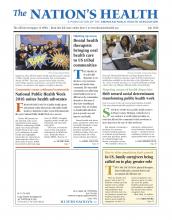A lack of resources makes it harder for low-income U.S. kids to manage food allergies, according to a recent study.
Low-income U.S. kids with food allergies get hit with higher medical care costs compared with kids from higher-income families, according to research published April 27 in Pediatrics.
The study surveyed over 1,600 caregivers of children with food allergies between November 2011 and January 2012. Researchers asked them questions about out-of-pocket costs related to their child’s food allergies, such as medication, and direct medical costs, such as emergency room visits. The sample was also broken down by factors such as race and ethnicity and household income.
Low-income families spent 2.5 times more on hospitalization and emergency room visits than higher income families, the study found. Annual costs were $1,021 for low-income families compared with $416 for higher-income ones.
Additionally, low-income families spent the least money on out-of-pocket costs, likely due to factors such as a lack of access to allergen-free foods and training on using epinephrine auto injectors, also known as an EpiPens. The injectors can be given to kids who have a severe allergic reaction to food. However, they can cost hundreds of dollars, said lead study author Ruchi Gupta, MD, MPH, an associate professor of pediatrics and a health services researcher at Northwestern University and Lurie Children’s Hospital.
“EpiPens are expensive,” Gupta told The Nation’s Health. “Manufacturers do have programs for low-income children, but a lot of families don’t know about them. (It’s about) making them much more aware that they can get those medications for free and making sure they have access to epinephrine auto injectors.”
Other possible public health solutions include reforming food labeling laws so there are mandatory and uniform statements on products that may contain allergens, such as peanuts, Gupta said. Such a move would benefit all children with food allergies, regardless of income. Affordable allergen-free food and grocery store aisles dedicated to those foods are also ways families can keep their kids safe when buying groceries, she added.
Access to specialists such as allergists is also essential for low-income kids. As they may receive public insurance, such as Medicaid, they may wait longer to see a specialist.
But while referrals are important, Gupta said she realizes not every child may have a chance to see a specialist.
“It’s important we train pediatricians in general to recognize allergies,” Gupta said.
For more information, visit http://pediatrics.aappublications.org/content/137/5/e20153678
- Copyright The Nation’s Health, American Public Health Association









